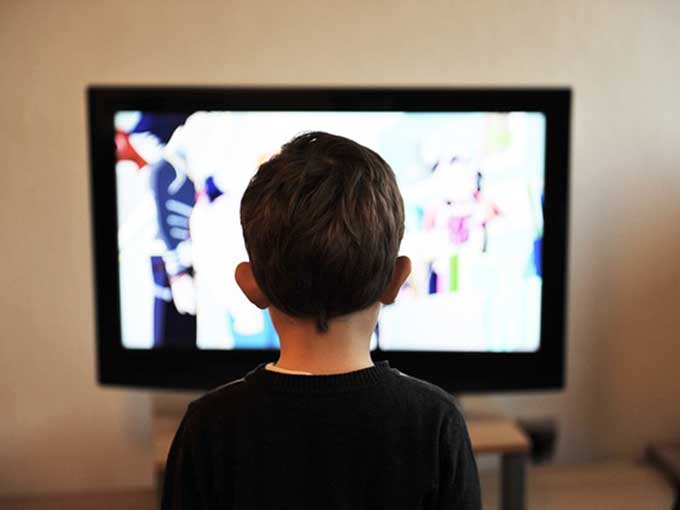The TV that today’s kids will watch when they’re older will be deeply shaped by the way they watch the small screen now. Factors like evolving technologies, socially-relevant programming and the ever-expanding internet will all play a part in how TV adapts to suit the needs of a future generation. And since most kids are already device-agnostic—looking for TV anywhere they can find it—content is the future focus of the medium, not individual devices.
The main thing to keep in mind? TV in the 2020s may not even look like TV as we know it. Here are four ways kids’ viewing habits and expectations are set to shape the future of TV, based on Insight Strategy Group’s unique understanding of the past, present and future media environment.
Participation
Kids today expect to participate with TV in a way their parents didn’t—and don’t. YouTube stars speak directly to kids and listen to their comments.
Apps like Minecraft let kids create worlds from scratch, and Musical.ly helps kids create their own videos. They can participate in choose-your-own-adventure narratives, virtual reality explorations, customizable apps and story-based video games.
Kids relish the control and creative input these new formats allow, and as kids grow they won’t want to let that go. Audience input may be the basis for the next decade’s most successful TV shows. To foster fan-created content that will build enthusiasm for a show, interact with fans so they feel that they’re being heard and listened to. Highlight input from fans on social media and reach out to big fans and ask for their feedback.
This generation wants to see themselves, or a piece of themselves, or people like them, in their media.
Need for 360-degree brand development
Kids can discover brands virtually anywhere now—and expect to see their favorite brands both on and off TV. If you’re planning to build a TV show, you should be thinking from the get-go about how you’re going to roll out the brand in other areas, like apps or video games or perhaps movies.
What are the natural springboards into each version? If you have a TV show, what play patterns are you seeding in that will make great toys down the line? What’s the catch phrase or recurring visual joke that kids will want on a t-shirt? If you have a board game or toy, what can you add that would naturally lend itself to content later, without feeling awkwardly tacked on?
Constant freshness
Kids’ favorite YouTubers post weekly, daily or even hourly. Memes come and go by the minute. This sets up an expectation of freshness.
Beyond preschool age, today’s kids have very low tolerance for reruns. They also notice when out-of-date trends show up in content. YouTubers can be very timely and on-trend, because the content is produced and released so quickly. But TV producers typically have much longer production cycles, often making trendy content feel dated by the time the work is released.
So what to do? To try to keep pace with the ever-fresh supply of content on YouTube and other digital sources, make sure you are always staying current in between those long-form releases. Create auxiliary content like music videos, “making of” clips, bloopers, or actor interviews. Avoid plain-old reruns by releasing a different spin on full-length content so kids will want to watch it again. Provide clues to Easter eggs hidden in the content that they have to search for. Or why not release a version with ducks quacking instead of actors speaking? Can you play it backwards?
To make sure you don’t have a cultural misstep, be careful about putting very timely, trendy references into work that has a long production cycle. Remember the difference between timely and timeless content.
Embracing different types of inclusivity
One of the defining features of the current generation of kids is that they’re the most diverse ever—in terms of ethnicity, family make-up and so much more. Inclusive content that welcomes a wide variety of viewers will succeed because kids expect their world to be mirrored. This isn’t likely to change as they get older.
Just one example from our research—kids tell us they don’t like it when a show is targeted at one gender or another. They prefer content that breaks down gender barriers. Shows that reflect diversity and inclusivity resonate with kids today, and will continue to be popular with them as they grow.
Content creators who keep these four factors in mind will have the most success as the current generation grows up. But if you need just one guiding principle, this should be it: Plan for your TV show to be more than a TV show.
Research questions to consider
- Where is their room in your show for viewers to participate and give feedback?
- How will audiences want to experience your content off-screen, and how can you best plant the seeds for those experiences?
- What are the best ways for your show to stay fresh in kids’ eyes?
- How can your content be inclusive and diverse while staying true to your story-world? Does your audience view your content as inclusive and diverse?
Sarah Chumsky is the VP of Insight Kids, a passionate team of business strategists and developmental experts. Through innovative qualitative and quantitative market research and consulting, they bring the voice of the child to the creative process, helping their clients create products and experiences that meet kids where they are.
























